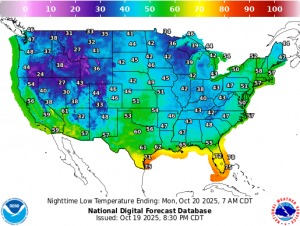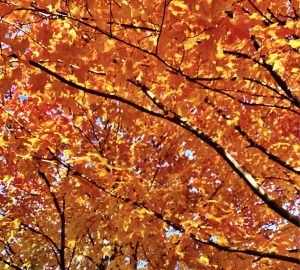Lightning is a huge electrical discharge that results from vigorous motions that occur in thunderstorms.

Lightning can travel from cloud to cloud, within the same cloud, or between the cloud and ground. In-cloud lightning discharges are more common than cloud-to-ground discharges and are not as hazardous. Cloud-to-ground is the best known type of lightning and it poses the greatest risk.
A typical cloud-to-ground flash begins as a negative charges travel towards the ground in a sequence of spurts. This makes the ground positively charged. As the negative charge approaches the ground, there is an upward stream of positive charged. When the two streams meet an initial flash occurs and a channel forms so that electricity can flow back forth between the cloud and ground. This occurs so quickly that it looks like a single brilliant flash, but high speed photography shows several bolts. Cloud-to-ground lightning starts from the sky and heads downward, but what we see can travel from the ground upward.
Lighting also has different appearances. Staccato lightning is a cloud-to-ground lightning strike which is a short-duration stroke that often, but not always, appears as a single very bright flash and often has considerable branching. Forked lightning is a name, not in formal usage, for cloud-to-ground lightning that exhibits branching of its path. Ribbon lightning occurs in thunderstorms with high cross winds and multiple strokes. The wind will blow each successive stroke slightly to one side of the previous stroke, causing a ribbon appearance. Bead lightning is a type of cloud-to-ground lightning which appears to break up into a string of short, bright sections.
Heat lightning is a common name for a lightning flash that appears to produce no discernible thunder because it occurs too far away for the thunder to be heard.
Steve Ackerman and Jonathan Martin, professors in the UW-Madison department of atmospheric and oceanic sciences, are guests on WHA radio (970 AM) at noon the last Monday of each month. Send them your questions at stevea@ssec.wisc.edu or jemarti1@wisc.edu.





